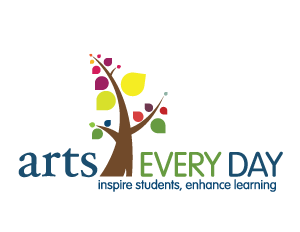
“Our students got a chance to really think about the importance of the theme of ‘Voice’ in relationship to voting. This idea of ‘voice’ is also deeply entrenched in the communities in which each student resides.”
When the 10X10 Exhibit theme was announced to be “Voice”, Glenmount Elementary Middle Art Teacher Elizabeth Miller took this opportunity to have meaningful conversations with students about the fact that it was a voting year. The students were given an assignment and were taught how to utilize a free graphic design app called Canva allowing for the creation of bold digital works that is currently on view at the Motor House at 120 W. North Avenue.
A lot of though goes into decided what the theme for each year’s exhibit should be. We not only try to pick topics that are relevant to what is happening in and around students’ lives, we also think about how these topics can be seamlessly woven into classroom conversations and existing curriculum. These calls for art become launching points for teachers to have engaging conversations with their students through critiques of the works, with prompts that inspire the art, and by exploring related themes. Below is an example of how Ms. Miller approached the theme of “Voice” with students and the kinds of questions they tried to answer in their work:
During critique but also through the explaining of the art lesson focused on Voting, we looked at examples of how the themes of voting and anti-racism could be communicated in a single image. As an instructor, I do try to ask lots of questions, as needed, to guide the discovery process and push critical thinking a bit deeper. We examined how show diversity, for example: a series of shades of brown to represent skin tones, I spotted a teachable moment. I asked “Are these tones of brown going dark enough to include all people? They go all the way to white, but do they go all the way to black? Should they? Do we know people darker than the darkest shade here? Do you think they would look at this scale of brown tones and see themselves? What message is it sending when it doesn’t display all colors?
What message do we want to send with our art?” There was an impressive discussion that developed from here. Students were able to feel permission to demand representation with celebrations of diversity and to advocate for others within their artwork by being intentional with their chosen imagery. Anti-blackness can be an issue even within the black community sometimes showing up as an ingrained preference for lighter skin. In art class, through art critique, our social justice assignments, and our critical thinking skills our students are finding a safe place to wrestle with these ideas and confront bias within themselves, as well as confronting it in the world around them. All of this, while learning virtually during a global pandemic.
All of these questions and discussions challenge students to think critically about their work and their intentions with their messages that they are trying to convey in their posters. Each one is different and provides a safe space for students to express themselves and why they think someone should vote. We hope these students walked away from this project feeling empowered and that their own voice was heard! Thank you Ms. Miller!




Examples of some of the posters from Ms. Miller’s assignment. Top left- Eniya Rayford, bottom left- Raylen Stokes, top right- Lucas Tyler, bottom right- Chandler Stuckey.


No comments yet.